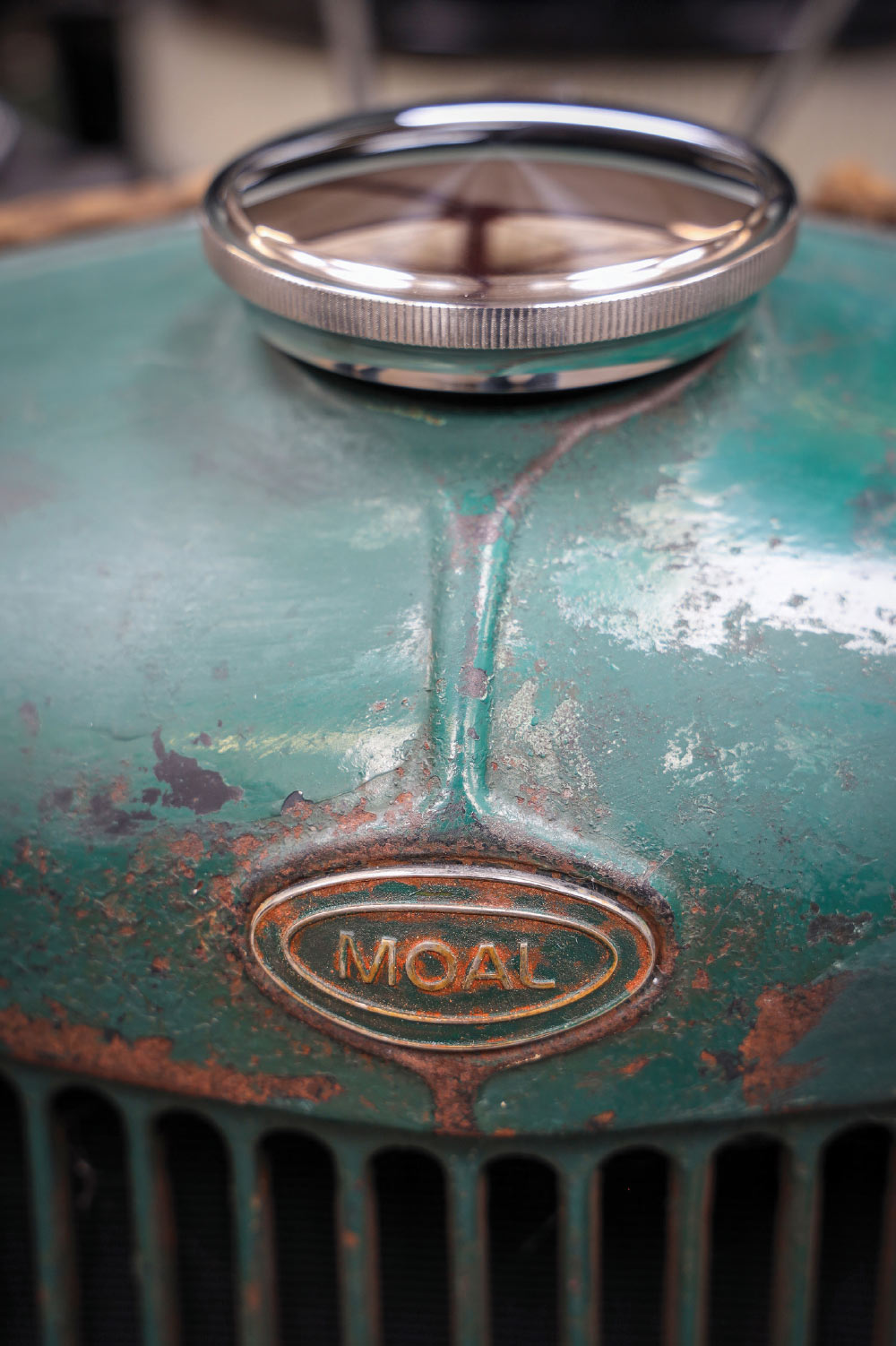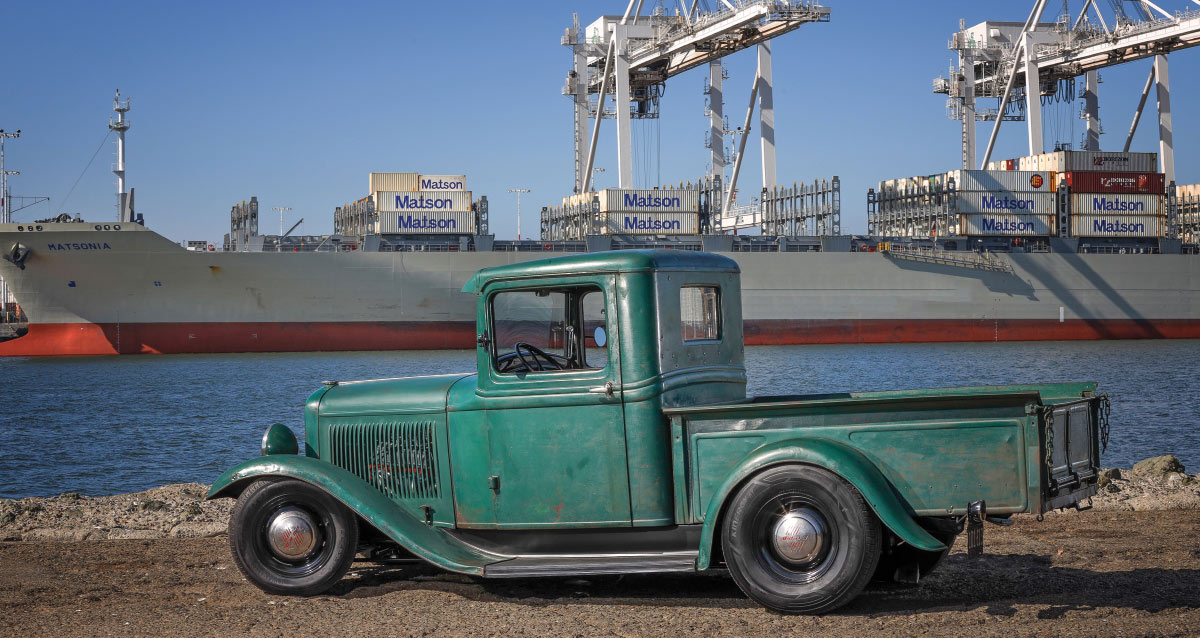 Photography & Videography by Michael Christensen
Photography & Videography by Michael Christensen
 Photography & Videography by Michael Christensen
Photography & Videography by Michael Christensen
ftentimes, “it’s the backstory that makes a hot rod interesting.” And while this is truly the case with Mary Lou Whitcomb’s ’32 Ford pickup, it’s but one of two stories that makes this pickem-up really fascinating.
Mary Lou grew up in Wyoming and as such had a fascination with the pickups that ranchers would use all day and then wash and take to town on the weekends. But in her case she wanted there to be a twist. Her husband gladly obliged, coming up with a potent small-block Chevy to be nestled into a modern hot rod chassis. Next, Mary Lou called Mike Moal of Moal Coachbuilders to put all of this together, which is where the second backstory comes about.
I’ve mentioned the “second backstory” and it involves Moal Coachbuilders. Well, it’s more of a “my” backstory, but it fits. I’ve covered Steve Moal and his shop builds for decades and have become accustomed to looking at a car and knowing the signature trademarks of a Moal-built hot rod. I have to admit this Moal-built patina hot rod is a first for me. This may not be their first “unfinished” build but it’s a strange sight given what I have seen over many years, whether it be a contender for America’s Most Beautiful Roadster or sitting on the 18th green at Pebble Beach. It must be said, whether it’s a concours build with unequalled fit and finish worthy of a Concours d’Elegance, this patina ’32 Ford pickup still exemplifies a Moal Coachbuilders accomplishment.
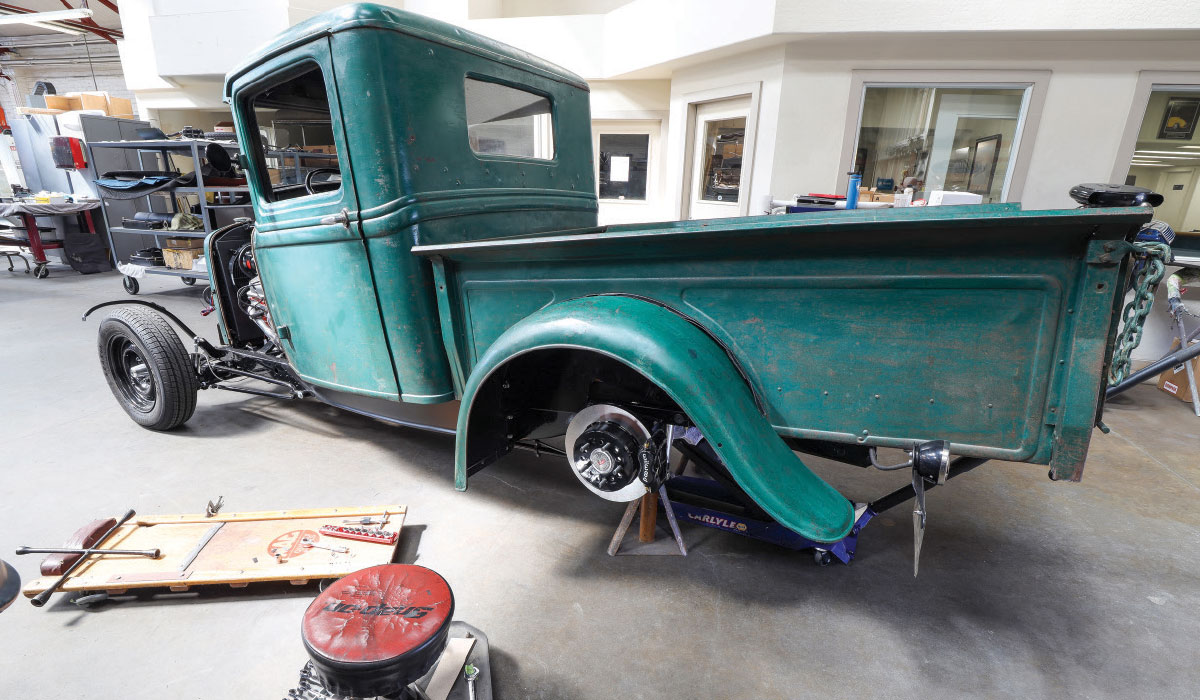
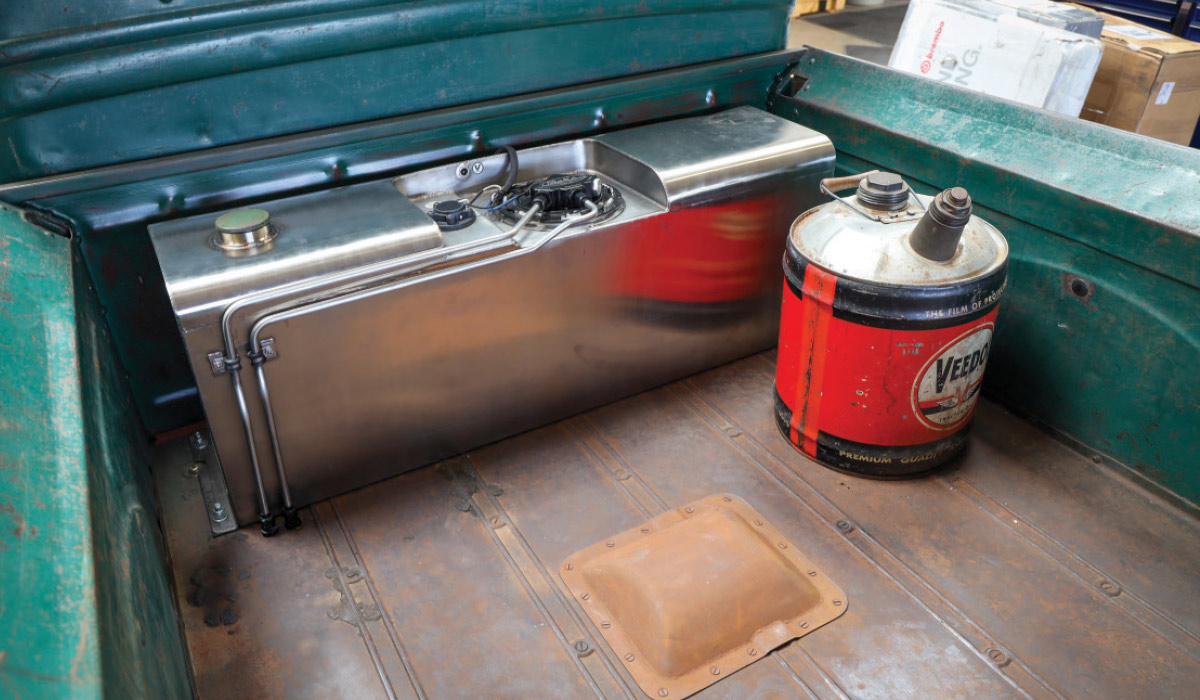
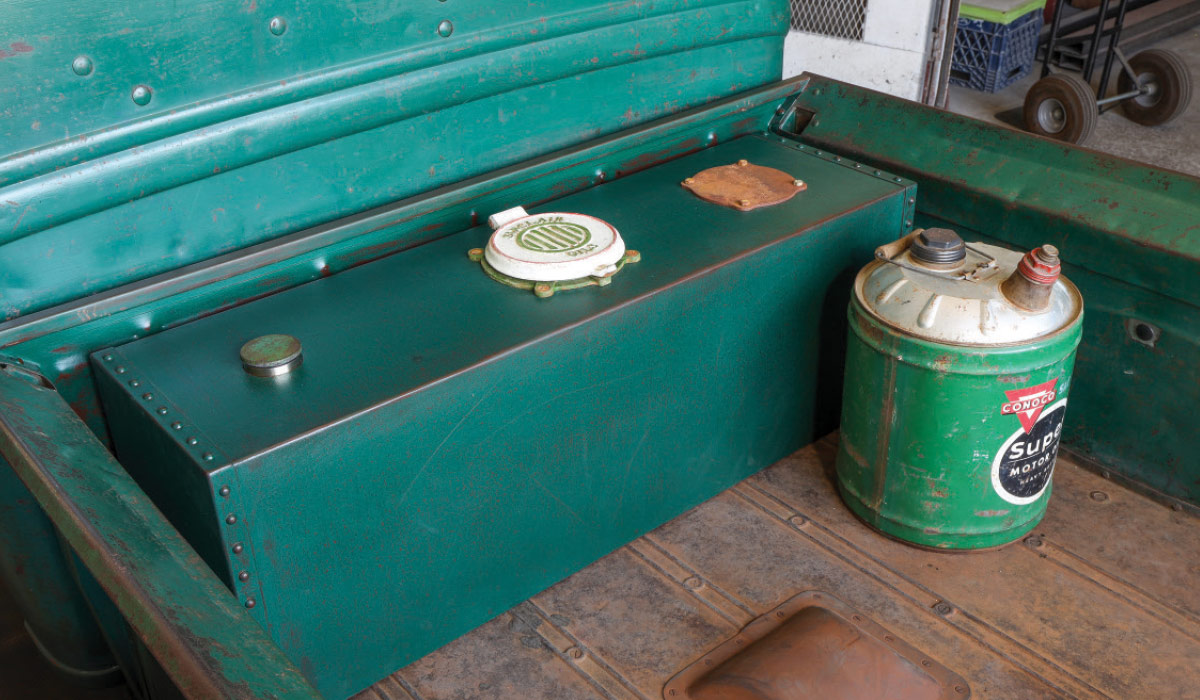
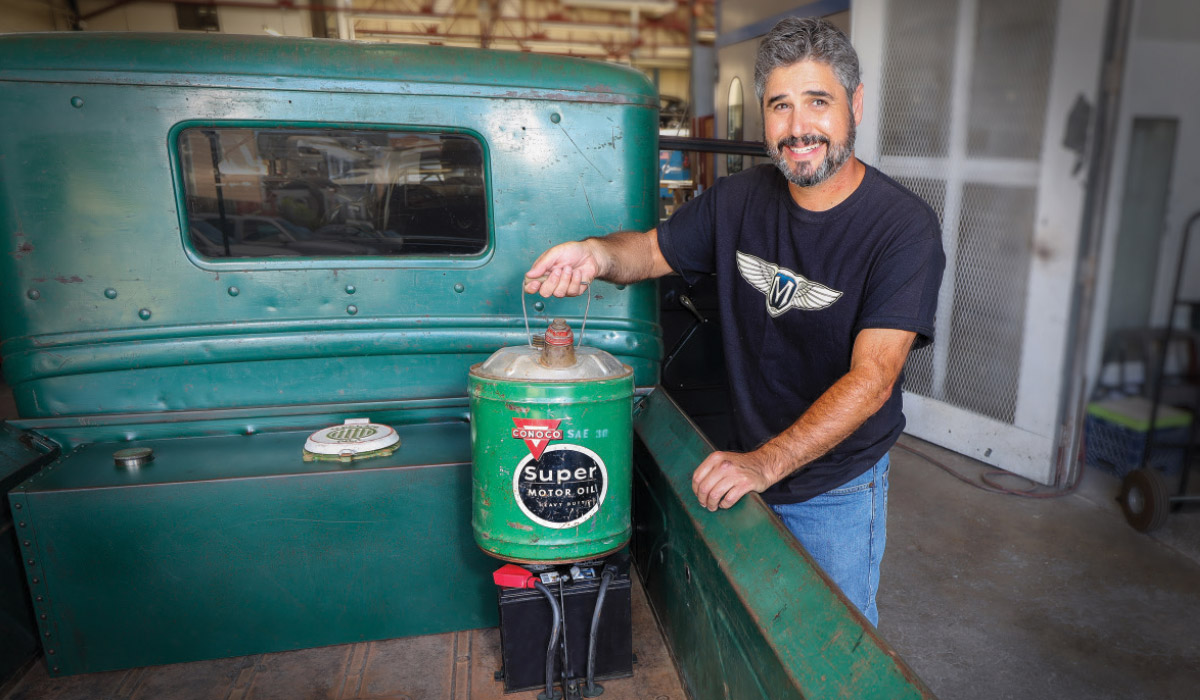
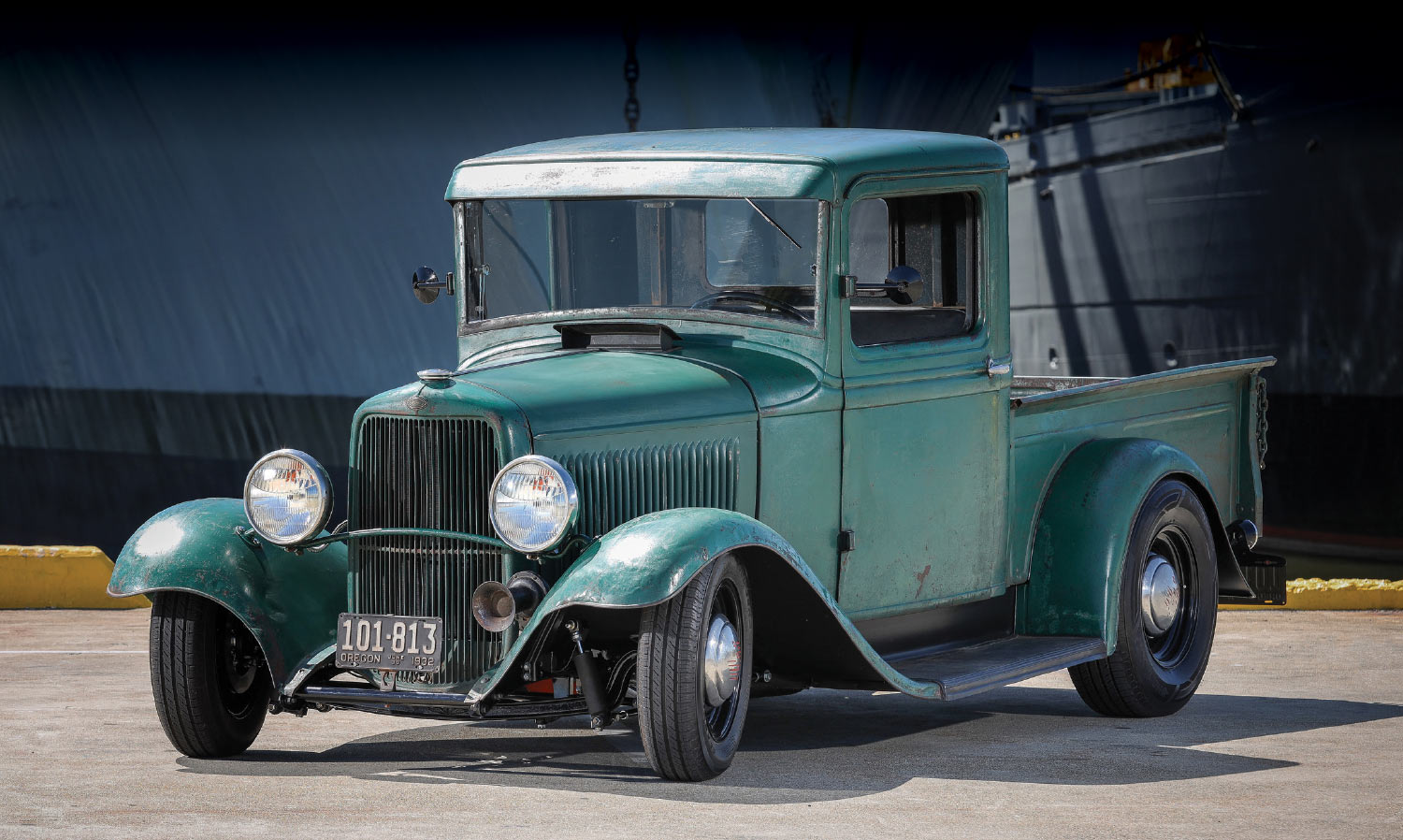
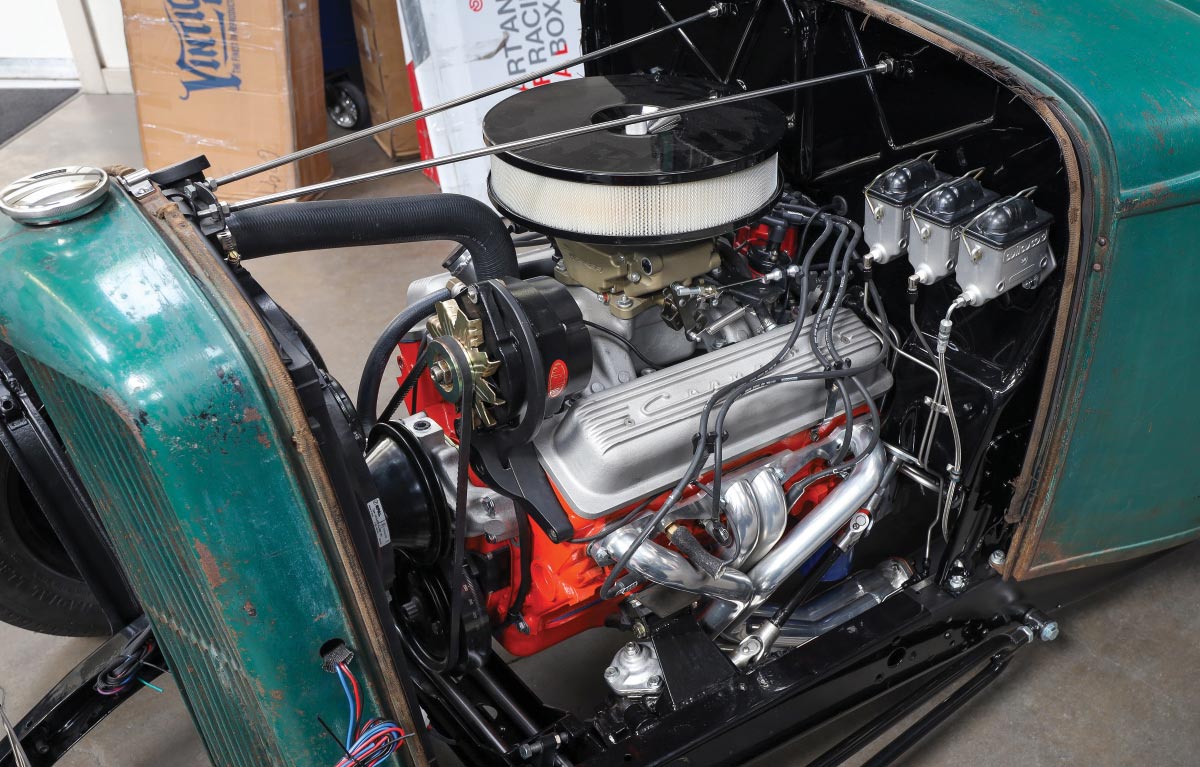
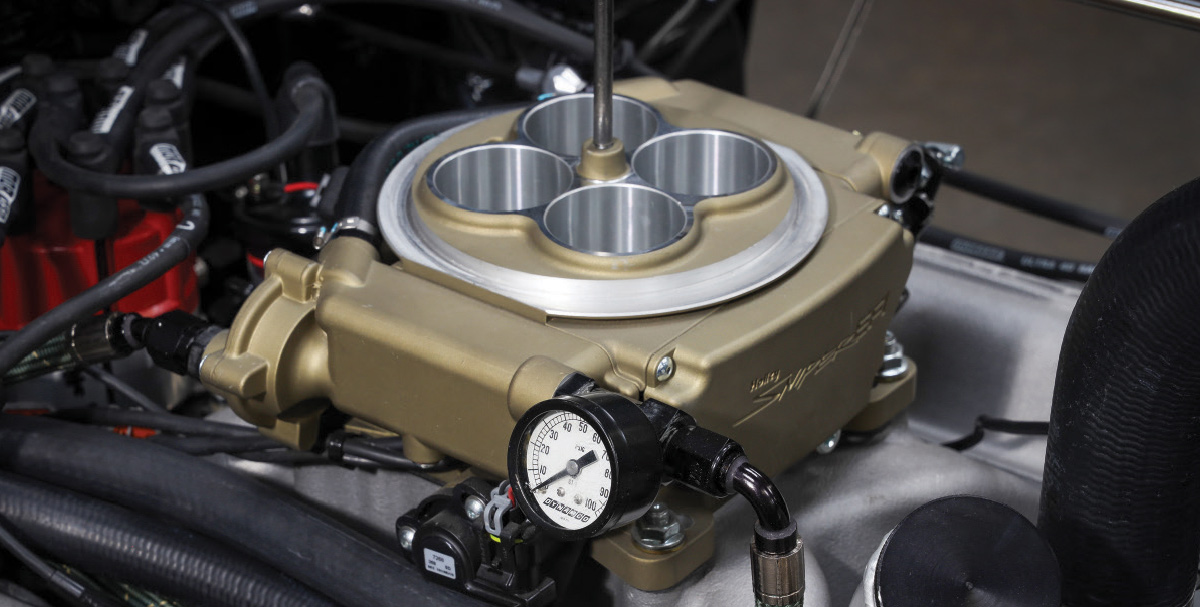
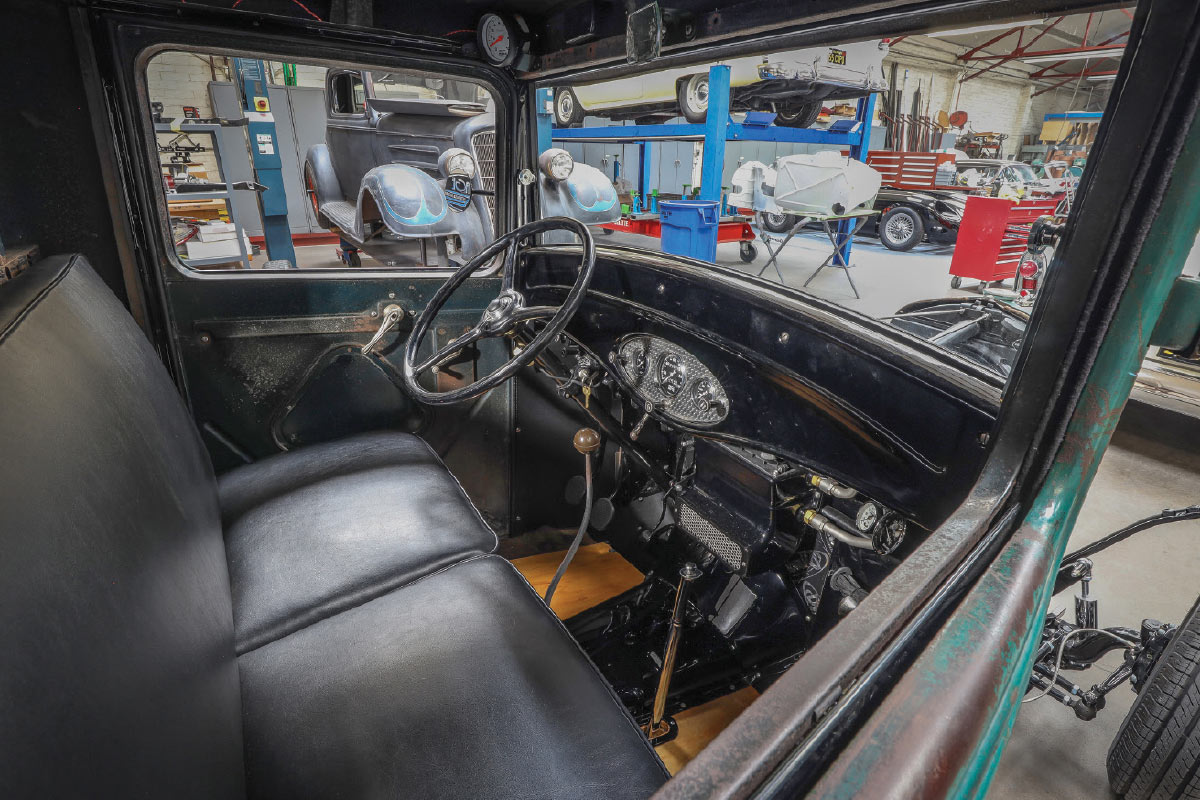
The original ’32 Ford pickup frame was used and then fitted with Moal boxing plates, crossmembers, and their trademark torsion bar suspension. A Super Bell drop I-beam axle is outfitted with early Ford spindles (’37-’41, round), a Saginaw 525 steering box with a 16:1 ratio, single-adjustable QA1 tube shocks, and Moal torsion bar for spring control. Wilwood 12-inch rotors with black powdercoated Dynalite calipers are used in front and 11-inch rotors with the matching calipers are used in back. The Wilwood twin-reservoir master cylinders are coupled with the Moal hanging pedals in conjunction with a Wilwood hydraulic clutch reservoir to satisfy the brake and clutch needs. We’ve mentioned rear braking but more rear goodies include a Moal-built Ford 9-inch housing filled with Currie 3.70 gears and 31-spline axles as well as more QA1 single-adjustable shocks, and the foundation of the rear suspension is a Moal torsion bar system. It’s held in place by an unequal four-bar setup.
Working our way forward from the rearend we will find a TREMEC TKO five-speed with a ’32 Ford shifter modified to fit by Moal Coachbuilders. The small-block Chevy uses a cast-iron flywheel to work with the trans to get the power rearward. On the subject of the SBC, it features both a cast-iron block and heads and comes in at 360 ci. Inside, Competition Proven pistons are used along with a Bullet camshaft from John Partridge all topped with an aluminum four-barrel intake dressed with a Holley Sniper EFI, MSD distributor and coil, and Moroso primary wires. Of course, there are the obligatory Corvette seven-fin valve covers but these are reproduction ones made to fit the modern Vortech head. What looks like an early exhaust system are long-tube headers that feed the Moal-fabricated custom exhaust system that is routed through a pair of DynoMax Turbo mufflers. Other engine appointments include an Edelbrock water pump, SPAL electric fan, Powermaster alternator, Meziere starter, and a Honda automotive battery that’s neatly hidden within a vintage-fabricated Conoco Super Motor Oil canister mounted in the pickup bed. Actually, this is pretty cool! Another custom bed–mounted accessory is the stainless steel, 18-gallon gas tank that’s covered with what appears to be a Sinclair Oils lubester tank but it’s truly a riveted gas tank cover. This nifty chassis is held up by Classic radial rubber in front that measures 165/80R15 and Hankook 235/75R15 in back. All are mounted to steelies (15×5 and 15×7) with early Ford caps snapped on.


The original ’32 Ford pickup frame was used and then fitted with Moal boxing plates, crossmembers, and their trademark torsion bar suspension. A Super Bell drop I-beam axle is outfitted with early Ford spindles (’37-’41, round), a Saginaw 525 steering box with a 16:1 ratio, single-adjustable QA1 tube shocks, and Moal torsion bar for spring control. Wilwood 12-inch rotors with black powdercoated Dynalite calipers are used in front and 11-inch rotors with the matching calipers are used in back. The Wilwood twin-reservoir master cylinders are coupled with the Moal hanging pedals in conjunction with a Wilwood hydraulic clutch reservoir to satisfy the brake and clutch needs. We’ve mentioned rear braking but more rear goodies include a Moal-built Ford 9-inch housing filled with Currie 3.70 gears and 31-spline axles as well as more QA1 single-adjustable shocks, and the foundation of the rear suspension is a Moal torsion bar system. It’s held in place by an unequal four-bar setup.
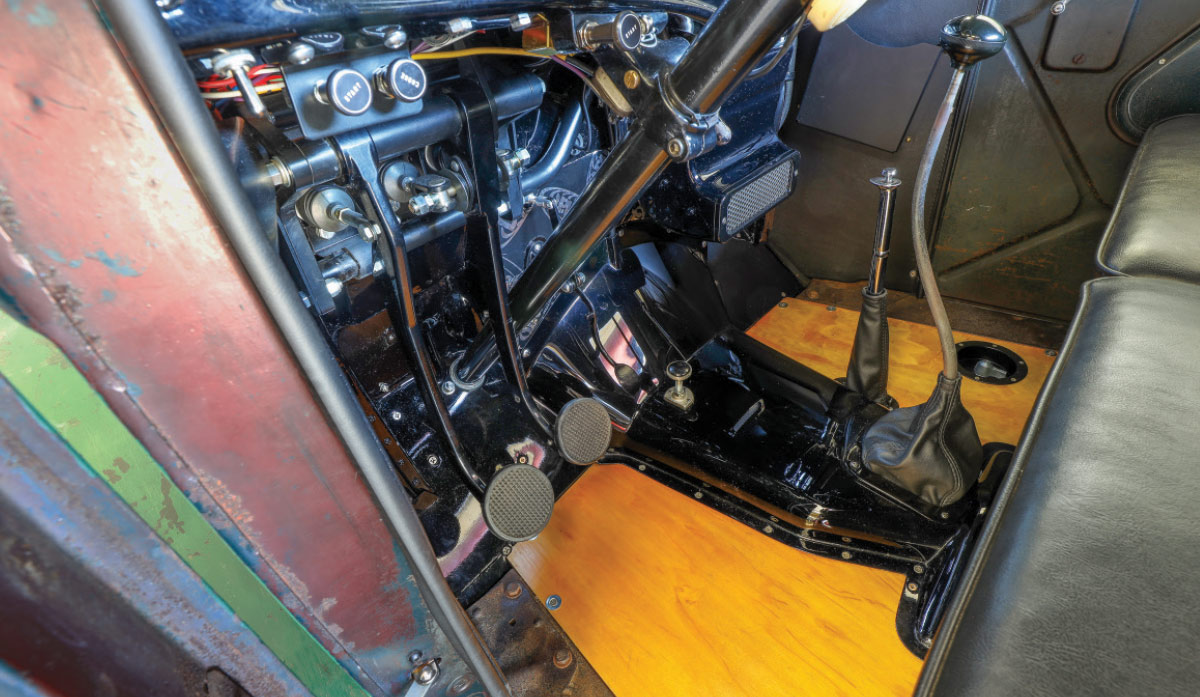


(Editor’s note: Make sure to look at this feature when it goes online, as the added photography during construction really tells a great story. Additionally, make sure to take your smartphone out and “read” the QR code, as the accompanying video tells another story on just how cool this pickup truly is. —B.B.)
